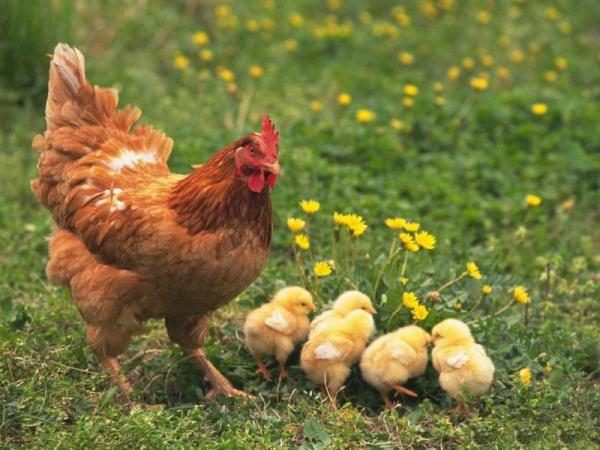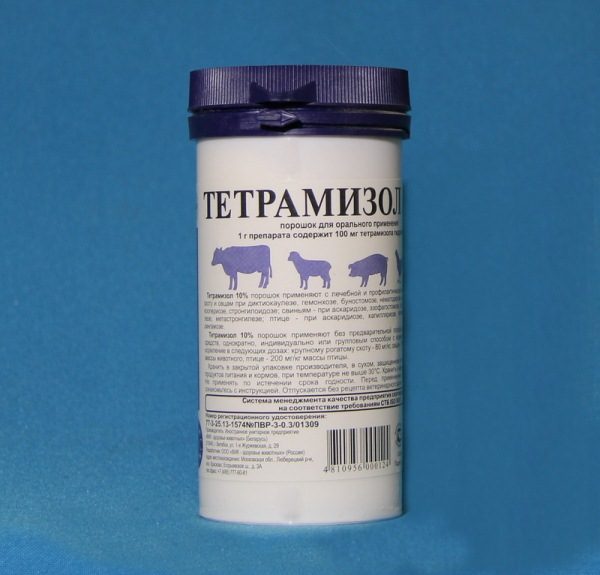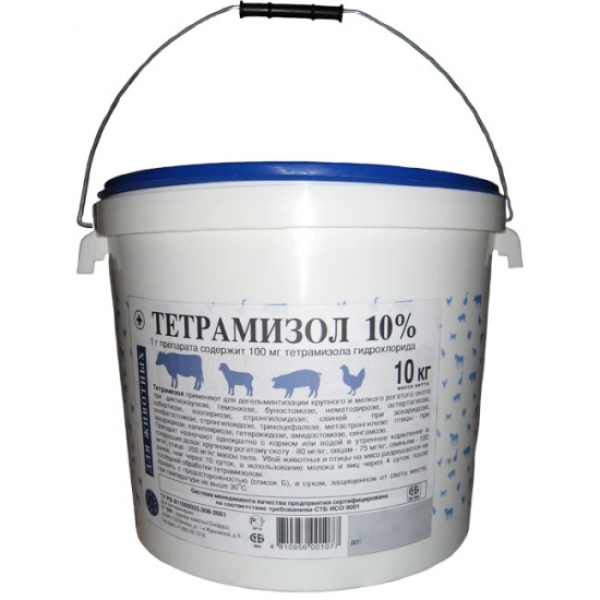Helminthiasis, or more simply, parasitic worms, called worms or worms, is found in humans, animals, and even plants. Birds, including agricultural, are no exception. The defeat of the body of poultry worms often leads to a number of negative consequences., and in especially neglected cases, to the death of a bird. One of the effective means to combat this disease is tetramisole, the instructions for use of which can be found below.
Table of contents
Symptoms of the presence of worms in birds
By signs the fact that birds have got worms, can serve the following symptoms:
- Weight loss, a sharp decrease in body weight.
- Decrease in productivitythe softness of the eggshell.
- Inflammatory processes in the small intestine.
- Liquid excrement yellow color.
- Lethargy, apathy, lethargy, lack of appetite.
- Birds like chickens and turkeys are observed. blanching comb.

To eliminate and prevent conditionscaused by damage to the body of poultry worms, often used well-proven drug tetramisole, which has a broad anthelmintic effect.
Indications for use tetramisole
Helminthiasis in poultry can manifest itself quite widely, depending on the type of parasite that has settled in the host. Worms can parasitize various organs. - lungs, gastrointestinal tract, oviducts, mucous membranes. The most common worms such as roundworm, pinworms, tracheal worms, capillaries or nematodes.
Tetramisole is used as an anthelmintic for prophylactic purposes., as well as for the treatment of birds from worms. Birds in clean cages are less susceptible to parasites than poultry with limited walking space. However, prophylactically, the drug should be given twice a year, and if necessary, de-worming individual individuals additionally.

The drug belongs to the relatively safe anthelmintic drugs, having moderate toxicity, without causing in the recommended dose embryotoxic, teratogenic and mutagenic action. After ingestion by oral means, tetramisole is rapidly absorbed from the gastrointestinal system, reaching the maximum concentration in tissues and organs after 60 minutes after administration and maintaining the concentration level throughout the day. Excretion of the drug from the body occurs mostly with urine and to a lesser extent with fecal masses.
Composition and release form
Available drug in the form of granules and powder.Granules of various shapes, ranging in size from 0.2mm to 3mm, are light dirty yellow in color, packaged in polyethylene-coated bags or cans with a capacity of 50g, 100g, I50g, 200g, 250g, 500g, I000g and 5000g. Forms of release Tetramisol differs from 10% and 20%, where 10gr and 20gr of the main active ingredient, tetramisol hydrochloride, are per 100g of funds. Tetramisole powder It also has a dosage of 10% and 20%, is a homogeneous powder of gray-white light color. Tetramisol is packaged in powder form in cans or bags with different capacities from 50g to 5kg.

Doses and method of use, instructions
The drug is given once during the morning feeding of poultry. Preliminary preparation for receiving tetramisole - The use of laxatives or diet is not required. In the case of tetramisole for the treatment of individual birds, the drug diluted with water is orally administered using a dosing syringe. With group deworming the drug is thoroughly mixed with compound feed at the rate of 5g per bird or 50-100gr of feed mixed with the medication.The finished mixture is evenly distributed in the trough with free access to food of the entire population.
Side effects
At observance of the dose recommended by the producer, good transfer of tetramisole is observed in domestic birds without identifying any anomalies. Even an accidental excess of the recommended dose of up to 15 times does not have a toxic effect on farm birds.
Contraindications
Animals and birds with infectious diseases that are not associated with helminthic invasion, are not subject to deworming until full recovery. In addition, the tool can not be used in birds with impaired renal function and liver. It is prohibited to take tetramisole together with organophosphate drugs., as well as with the preparations of Pyrantel and Morantel.
Success in the field of poultry farming is directly dependent on such indicators as the volume and quality of products. To achieve high levels can only be fostered fully healthy animals. The absence of parasitic organisms in poultry is one of the key factors affecting the health of domestic birds.
